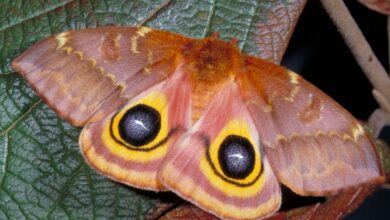How to Care for a Money Tree (Pachira Aquatica)

The Money Tree, or Pachira Aquatica, is beloved for its lush tropical foliage and its symbolism. With its braided trunk said to “trap” fortune and five-lobed leaves symbolizing the elements of balance, the Money Tree is a favorite in Feng Shui practices. It makes a wonderful gift for housewarming or new ventures. Beyond its aesthetic appeal and connection to prosperity, the Money Tree earns its place in homes for being remarkably easy to care for—even for beginners, instilling confidence and capability in its owners.
If you’re ready to keep your Money Tree thriving and bring a touch of good fortune to your home, here’s a comprehensive guide on Money Tree Care, from choosing the right spot to propagating new plants.
Light Requirements for a Money Tree
Proper lighting is one of the most critical factors for a healthy Money Tree. Native to tropical regions, this plant thrives best in bright, indirect light.
- Where to Place Your Money Tree:
Position your Money Tree near a window with plenty of filtered sunlight, such as an east-facing or south-facing window. Avoid direct sun, as this can scorch the leaves.
- Signs of Incorrect Lighting:
You might notice slower growth or yellowing leaves if the plant gets too little light. On the other hand, too much direct sunlight can cause leaf burn and crispy edges.
- Can Money Trees Grow in Low Light?
Yes, but they may grow slowly and with smaller leaves than in ideal lighting conditions. If your home lacks natural light, consider supplementing with grow lights.
How Often to Water a Money Tree

New owners are commonly concerned about how often to water a Money Tree. Striking the right balance is key to avoiding root rot or dehydration.
- How to Water:
Water your Money Tree thoroughly, allowing excess water to flow through the drainage hole in its pot. Discard any standing water in the saucer to prevent soggy roots.
- Watering Frequency:
Generally, your Money Tree should be watered every 1–2 weeks, depending on the season. Check the top inch of soil; water only when it feels dry to the touch.
- What to Avoid:
- Overwatering leads to root rot, visible as yellowing leaves or a mushy trunk.
- Underwatering can cause wilting or browning edges. If this happens, increase the watering frequency slightly.
- Seasonal Adjustments:
Money Trees need less water in winter when growth slows, so adjust your watering schedule accordingly.
The Best Soil and Pot for a Money Tree
The right soil and pot are crucial for keeping your money tree healthy. These factors promote good drainage and allow the roots to thrive.
- Ideal Soil Mix:
Opt for a well-draining soil mix, such as a potting soil blend with perlite or sand. This prevents water from pooling around the roots.
- Choosing the Right Pot:
Use a pot with drainage holes to avoid waterlogging. Many growers choose ceramic or terracotta pots for their durability and aesthetic appeal.
- Repotting:
Plan to repot your Money Tree every 2–3 years or once it becomes root-bound. Spring or early summer is the best time for repotting.
Pruning and Shaping Your Money Tree
Pruning is essential for maintaining the Money Tree’s iconic shape and encouraging healthy growth.
- When to Prune:
Trim your plant in spring or early summer when growth is more active.
- How to Prune:
- Use sharp, sanitized scissors or pruning shears.
- Cut back any leggy branches or stems that grow out of shape.
- Remove yellowed or damaged leaves to promote fresh growth.
- Shaping the Trunk:
If your Money Tree has a braided trunk, you can gently braid new growth while the stems are still flexible. Secure the braid loosely, and it will strengthen over time.
Common Money Tree Problems and How to Fix Them
Even with beginner-friendly plants like the Money Tree, some issues may arise. Here’s how to tackle common problems:
- Leaf Drop:
- Cause: Overwatering, under-watering, or environmental stress.
- Solution: Check watering habits and ensure stable light and temperature levels.
- Pest Infestations:
- Common pests include spider mites, scale, and mealybugs.
- Solution: Wipe leaves with a damp cloth and treat infestations with insecticidal soap or neem oil.
- Yellow or Brown Leaves:
- Cause: Overwatering, nutrient deficiencies, or too much direct light.
- Solution: Adjust watering, examine light placement, and fertilize during the growing season.
How to Propagate a Money Tree

Propagating a Money Tree from cuttings is an excellent way to grow more beautiful plants.
- Select a Healthy Stem:
Choose a stem with at least two leaf nodes (small bumps where leaves develop).
- Make a Cutting:
Use sterilized scissors to snip the stem just below a leaf node.
- Prepare the Cutting:
Remove the lower leaves, leaving a few at the top for photosynthesis.
- Plant the Cutting:
Place the cutting in a small pot filled with moist, well-draining soil or rooting it in water.
- Provide the Ideal Environment:
-
- Keep the cutting in bright, indirect light.
- Cover with a clear plastic bag to create a humid environment if propagating in soil.
-
- Wait for Roots:
Roots usually develop within 4–6 weeks. Once rooted, transfer the cutting to its permanent pot.
Why Grow a Money Tree?
Whether you’re a seasoned gardener or exploring your first houseplant, the Money Tree adds charm and greenery to any space. Its reputation for attracting prosperity and balance makes it a lovely addition to any home or office, instilling a sense of hope and optimism. Regular maintenance, such as watering, pruning, and pest control, is straightforward, making it accessible for beginners.
The best part? Caring for a Money Tree offers a rewarding experience that perfectly balances functionality, beauty, and meaning, leaving you with fulfillment and satisfaction.



